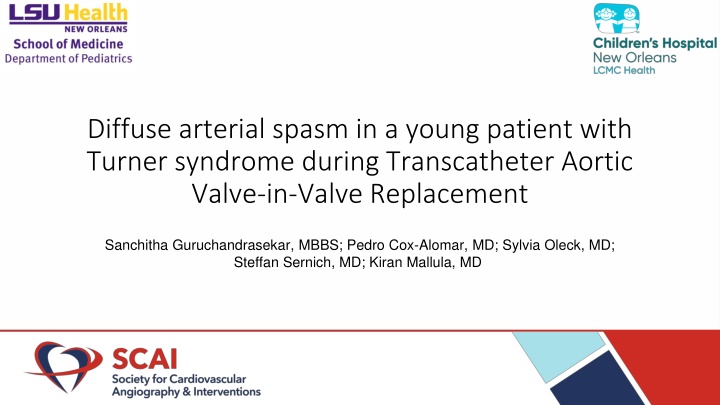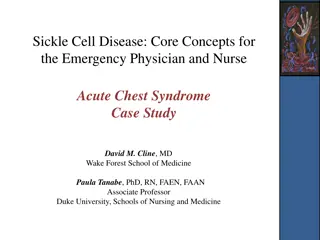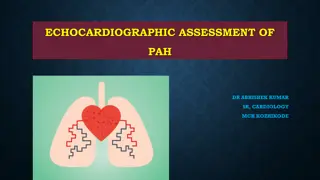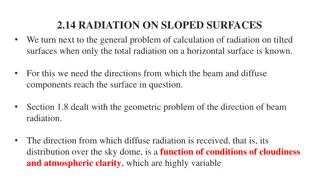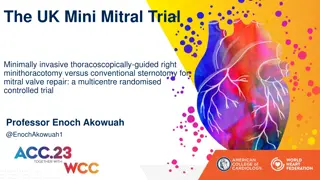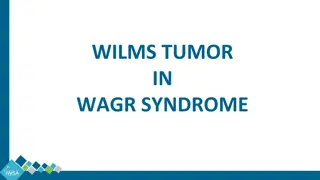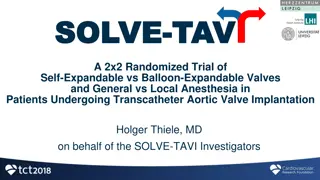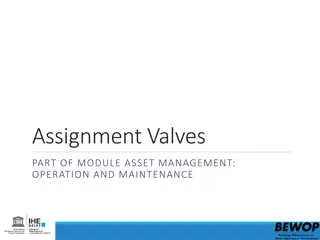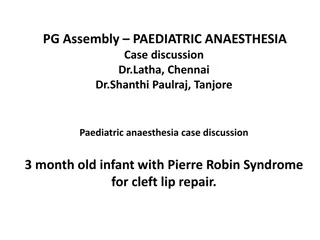Diffuse Arterial Spasm in Turner Syndrome Patient during Valve-in-Valve Procedure
A young Turner syndrome patient experienced diffuse arterial spasm during transcatheter aortic valve-in-valve replacement. History, symptoms, investigations, treatment options, and final consensus are detailed. The patient's complex medical background, including prior surgeries and concern for future interventions, guided the decision-making process. Challenges such as warfarin safety and arterial occlusions were addressed to ensure optimal care.
Download Presentation

Please find below an Image/Link to download the presentation.
The content on the website is provided AS IS for your information and personal use only. It may not be sold, licensed, or shared on other websites without obtaining consent from the author.If you encounter any issues during the download, it is possible that the publisher has removed the file from their server.
You are allowed to download the files provided on this website for personal or commercial use, subject to the condition that they are used lawfully. All files are the property of their respective owners.
The content on the website is provided AS IS for your information and personal use only. It may not be sold, licensed, or shared on other websites without obtaining consent from the author.
E N D
Presentation Transcript
Diffuse arterial spasm in a young patient with Turner syndrome during Transcatheter Aortic Valve-in-Valve Replacement Sanchitha Guruchandrasekar, MBBS; Pedro Cox-Alomar, MD; Sylvia Oleck, MD; Steffan Sernich, MD; Kiran Mallula, MD
Disclosures None
History 24 yo F with Turner syndrome, h/o bicuspid aortic valve, aortic stenosis, coarctation of aorta 1 month- Balloon valvuloplasty, coarctation repair 4 years- Surgical bioprosthetic aortic valve replacement 15 years- Aortic root replacement with 23 mm Magna-perimount valve and 26 mm Hemashield conduit, septal myectomy
History Jehovah s witnesses- bloodless surgeries 17 years- Resection of arteriovenous malformation in the jejunum
Symptoms Admitted for heart failure management NYHA class III symptoms Progressive shortness of breath Orthopnea Fatigue Palpitations on exertion Chest tightness on exertion
Investigations NT-ProBNP- 17,100 pg/ml TTE: Severe aortic stenosis- Peak AV gradient 120 mmHg, mean AV gradient 80 mmHg AVA- 0.7 cm2 (0.4cm2/m2) Severe aortic insufficiency Mild LV systolic dysfunction (EF 45-50%)
Treatment options Ross procedure Surgical bioprosthetic aortic valve replacement Surgical mechanical valve replacement ViV TAVR
Final consensus ViV TAVR Previous sternotomies (2) Potential need for future surgeries Warfarin safety considering history of AVM
CT angiogram neck, chest, abdomen, pelvis Partial calcification of AV Right coronary cusp diameter- 27 mm, left coronary and non-coronary cusp diameter-26 mm RCA and LCA were 23 mm and 17 mm above the bottom of prosthesis Occlusion of right external iliac artery Left iliofemoral artery patent
CT angiogram neck, chest, abdomen, pelvis Partial calcification of AV Right coronary cusp diameter- 27 mm, left coronary and non-coronary cusp diameter-26 mm RCA and LCA were 23 mm and 17 mm above the bottom of prosthesis Occlusion of right external iliac artery Left iliofemoral artery patent
Procedure Patient in cath lab 6F sheath in right jugular vein for pacing catheter 5F sheath in left femoral artery 6F sheath in right brachial artery Ascending aortic angiogram- Normal coronary arteries
Arterial narrowing Difficulty in advancing 8F sheath in the LFA Subsequent angiography: Severe stenosis of LFA Right common iliac artery- 2.9 mm, left common iliac artery- 2.3 mm Right subclavian artery- 4.8 mm, left subclavian artery- 4.2 mm Right carotid artery- 5.6 mm, left carotid artery 4.7 mm
LFA angiogram Aortogram
Second attempt 4F and 6F sheaths in right brachial artery and right femoral vein RV pacing catheter insertion 8F sheath in LFA Papaverine administered Two perclose devices used in anticipation of securing hemostasis after procedure LFA dilated with 10 F dilator followed by placement of 14F Edwards Esheath
Valve deployment AV crossed with an AL-1 catheter followed by insertion of straight 300 cm stiff Amplatz wire that was positioned in the LV 23 mm Edwards Sapien S3 valve deployed under RV pacing and angiographic guidance.
Post deployment TEE: Resolution of aortic stenosis Bioprosthetic valve peak gradient 38 mmHg, mean gradient 23mmHg Trivial insufficiency No paravalvar leaks
Follow up 6 month follow up: Significant clinical improvement TTE: Mean gradient across bioprosthetic AV 21 mmHg (stable from prior) No regurgitation Normal left ventricular systolic function
Differential diagnosis of arterial narrowing* Accordion effect Arterial dissection Arterial perforation Vasospasm *Gallagher C, et al. Bilateral external iliac artery catheter-induced vasospasm during angiography. Angiology 2006;57(1):115-118.
Arterial vasospasm More common in small arteries Vasospasm of large arteries - ergotamine, cocaine or catheter induced Catheter induced vasospasm*: Mechanical irritation Release of vasoactive substances Endothelial denudation Sympathetic overactivity associated with Turner syndrome+ *Ergene O, et al. Catheter-induced vasospasm in the right external iliac and femoral arteries during a cardiac diagnostic procedure. International Journal of Cardiac Imaging 1999;15:189-193. +Gravholt CH, et al. Nocturnal hypertension and impaired sympathovagal tone in Turner syndrome. Journal of Hypertension Feb 2006;24(2):353-360.
Conclusion Catheter induced arterial vasospasm is a rare but transient phenomenon May be prevented by preemptive administration of vasodilators Recognition of this phenomenon is important for planning procedural access in TAVR procedures
Thank you! If there are questions, please email me at sguruc@lsuhsc.edu.
